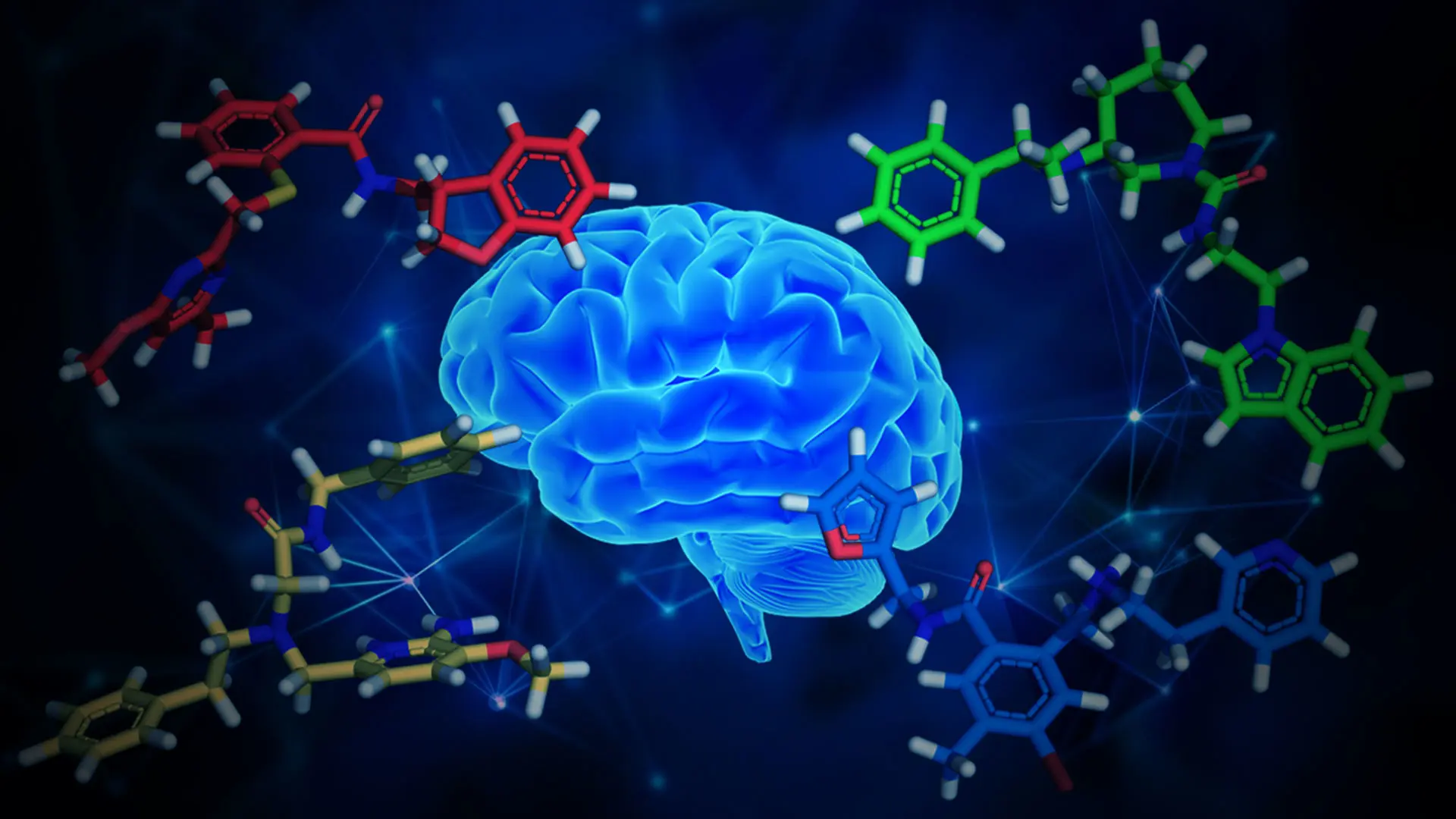A unique feature of The Friedman Brain Institute (FBI) that distinguishes it from other world-class neuroscience research institutes is its significant investment in the infrastructure necessary to engage in high-level drug discovery.
What distinguishes FBI from many other neuroscience institutes?
We invested in the infrastructure for high-level drug discovery.
Embedded in the very fabric of the FBI are world-class medicinal chemists who work closely with neurobiologists and geneticists to translate the most important new discoveries into novel treatments for brain disorders. Along with our structural biologists and computational neuroscientists, they are discovering new GPCR-targeting drugs that may yield breakthrough treatments for CNS disorders.
Our goal: Finding breakthrough treatments for CNS disorders.
When activated by a drug, GPCRs can enhance or suppress “downstream” signaling processes within brain cells. They accomplish these actions through well-characterized (canonical) pathways, which depend on a specialized heterotrimeric protein—called the “G protein” (named for its binding to Guanine nucleotides)—contained within the GPCR complex.
GPCRs can also signal through less well understood (noncanonical) pathways in a G protein-independent manner. Often these noncanonical signaling processes depend on a different protein called arrestin, which is recruited to the GPCR after it has been activated by a drug.
New classes of drugs have been discovered that can preferentially alter the canonical or noncanonical signaling processes engaged by GPCRs. Such drugs are said to have functional selectivity and are sometimes called “biased ligands.” Biased ligands for GPCRs have attracted a lot of attention as novel medications for CNS disorders. By enhancing only the beneficial effects of GPCRs associated, for instance, with canonical signaling, while simultaneously avoiding side effects associated with noncanonical signaling, or vice versa, biased ligands have the potential to be both safer and more effective than traditional GPCR-targeting drugs.
Jian Jin, PhD, Director of the Center for Therapeutics Discovery, is a leading FBI scientist and a pioneer in creating biased ligands of GPCRs. Building on their success in generating biased ligands of dopamine D1 and D2 receptors, the Jin Lab is creating novel biased ligands of serotonin 2A (5-HT2A) receptors that selectively activate the canonical (G protein-dependent) signaling pathway over the noncanonical (arrestin-dependent) pathway.
These biased small-molecule agonists of 5-HT2A are expected to be effective medications for a range of psychiatric disorders, including depression and anxiety. Crucially, these biased ligands may be able to avoid the serious side effects, such as hallucinations and disorientation, commonly associated with psychedelic drugs, for example, psilocybin and lysergic acid diethylamide (LSD), which are partial agonists at the 5-HT2A receptor in an unbiased manner.
FBI scientists are developing several classes of GPCR-targeted drugs
In addition to biased ligands, medicinal chemists at Mount Sinai are developing other innovative classes of GPCR-targeted drugs. These include allosteric modulators, which alone have no functional effect on GPCRs, but instead can increase or decrease the actions of the natural chemicals in the body that act upon GPCRs.
Allosteric modulates can therefore function as chemical “rheostats” to dial up or dial down GPCR activity in the brain. This is an attractive proposition because it allows scientists to boost or diminish the endogenous activity of GPCRs to treat brain disorders while minimizing adverse side effects.

Artistic representation of artificial intelligence-enabled central nervous system drug discovery efforts. Credit: Marta Filizola, PhD
Many laboratories in the FBI have made tremendous strides in leveraging this novel mode of GPCR drug discovery. For example, Marta Filizola, PhD, Dean of the Graduate School of Biomedical Sciences, discovered allosteric modulators of opioid receptors that enhance the analgesic but not the adverse effects of opioid drugs in animal models. Furthermore, Dr. Jin and his collaborators have developed allosteric modulators of two poorly understood GPCRs: GPR68 and GPR65, known as “orphan receptors” because their natural ligands remain unknown. This helps pave the way for a better understanding of the role of these receptors in neural and behavioral function.
We anticipate that our unique research capabilities will continue to accelerate the pace of GPCR drug discovery at Mount Sinai in the coming years, giving us unparalleled opportunities to discover the desperately needed new treatments for CNS disorders.
